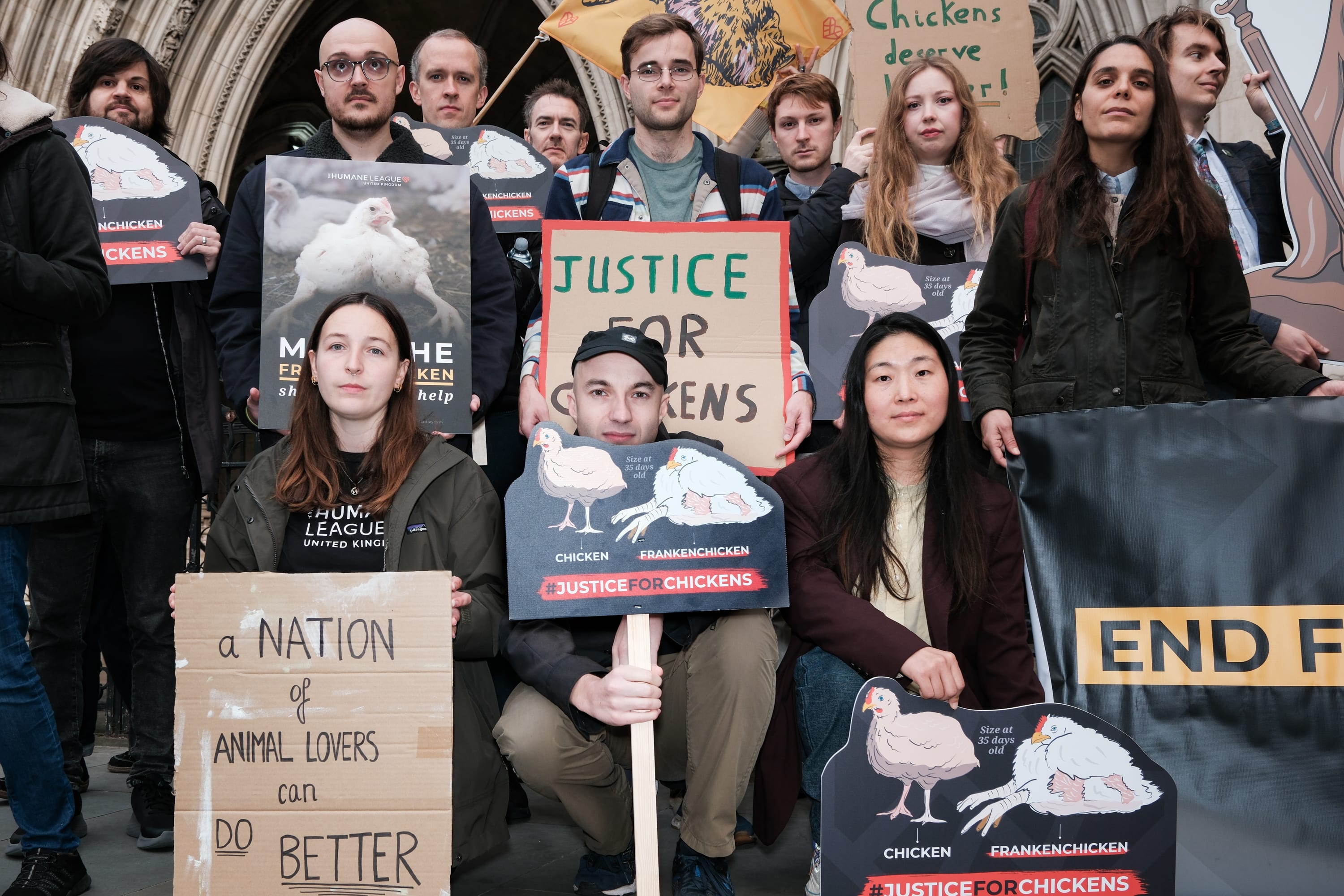
Four years of work has led to his moment. When we started this, we knew it would be big. A battle of David versus Goliath as we took the Government to court. But we also knew that it was the right thing to do, to fight for the millions of Frankenchickens that were suffering because of the way that they had been bred. And on Friday 13th December, we got the result we had been nervously waiting for.
Represented by Advocates for Animals, four years ago we started the process to take the Government to court, arguing that fast-growing chicken breeds, known as Frankenchickens, are illegal under current animal welfare laws.
After a loss, and an appeal, in October 2024 we entered the courts once more. And the judgment is now in on one of the most important legal cases for animals in history.
The judges have ruled in favour on our main argument - that the law says that animals should not be kept in the UK if it means they will suffer because of how they have been bred. This is a huge moment for animals in the UK.
A billion Frankenchickens are raised with suffering coded into their DNA each year. They are bred to grow too big, too fast, to make the most profit possible. In light of this ruling, we believe that farmers are breaking the law if they continue to keep these chickens.
However, Defra, the Government department responsible for farming, has been let off the hook on a technicality. Because Defra has been silent on fast-growing breeds of chicken, the judges found they had no concrete policy that they could rule against. This means that our case has been dismissed and the judges have not ordered Defra to act.
It is clear: by not addressing this major animal welfare crisis, Defra has failed billions of animals - and the farming community. This must change.
While this ruling has failed to force the Government to act, it has confirmed our view that farmers are acting criminally by using fast-growing breeds. We will now explore bringing private prosecutions against mega-farms that use Frankenchickens.
The cruel use of Frankenchickens is possibly the biggest animal welfare crisis of our time. With your continued support, we will use this new ruling to do everything we can to bring it to an end.

Gotcha, that makes sense! Even if producers slaughter at a lower weight, I think the number of chicken-days of life per kg of meat shouldn't change much relative to what goes into the WFP analysis. So I don't think that producers slaughtering earlier changes the quantity of time spent suffering very significantly, just whether it's distributed among fewer longer-lived chickens or more shorter-lived chickens.